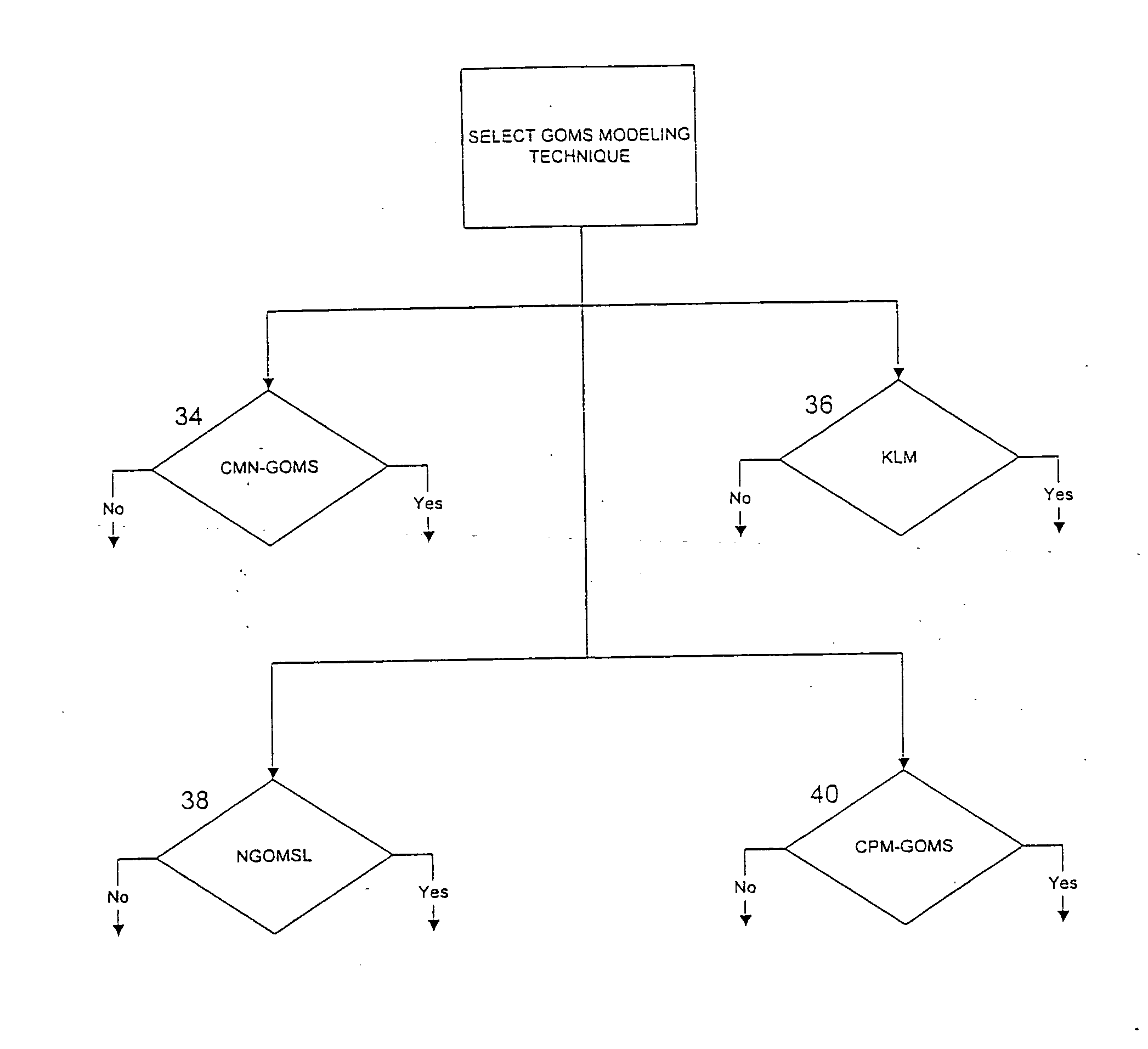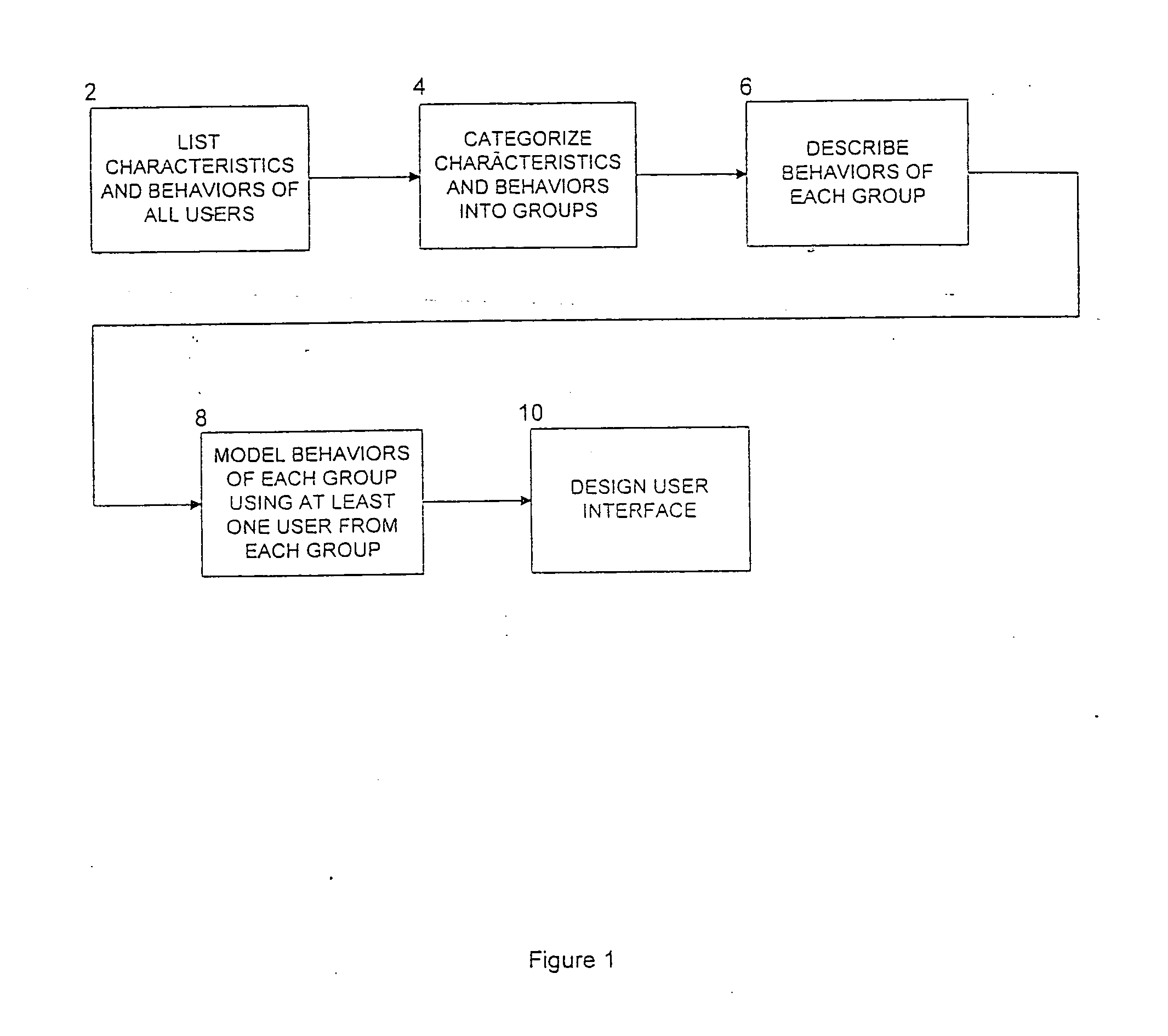Method for categorizing, describing and modeling types of system users
- Summary
- Abstract
- Description
- Claims
- Application Information
AI Technical Summary
Benefits of technology
Problems solved by technology
Method used
Image
Examples
Embodiment Construction
The present invention integrates the activities of categorizing, describing, and modeling into one single consistent approach. FIG. 1 shows a block diagram of the present invention. The first activity performed is to create a tentative list of characteristics and behaviors of the users 2. This tentative list is created by identifying the goals desired for the user interface or the user models, and listing expected and desired behaviors that are relevant to these goals. The list is then revised to include only those characteristics and behaviors that are important based on the goals. Then, the activity of categorizing 4 begins. Information is obtained from users regarding their characteristics and behaviors. This information may be obtained from a survey completed by the users, or from some other means. Each user's characteristics and behavioral information is then converted to a score or value. The users are then mapped or charted based on which behaviors they exhibit. The mapping ...
PUM
 Login to View More
Login to View More Abstract
Description
Claims
Application Information
 Login to View More
Login to View More - R&D
- Intellectual Property
- Life Sciences
- Materials
- Tech Scout
- Unparalleled Data Quality
- Higher Quality Content
- 60% Fewer Hallucinations
Browse by: Latest US Patents, China's latest patents, Technical Efficacy Thesaurus, Application Domain, Technology Topic, Popular Technical Reports.
© 2025 PatSnap. All rights reserved.Legal|Privacy policy|Modern Slavery Act Transparency Statement|Sitemap|About US| Contact US: help@patsnap.com



